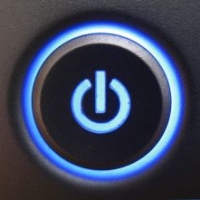How the Internet of Things Will Impact Business—and Software

“The Internet of Things” has been an underlying theme at this year’s Consumer Electronics Show (CES), as everything from cloud-connected thermostats to Crock-Pots has been put on display. Exhibitors at CES demonstrate a world where anything in your home or office can be reached through a mobile device. But as the Internet of Things creeps toward becoming a day-to-day reality for the mass consumer market, many businesses are wondering what impact this will have on the retail world as we know it today.
The Internet of Things signals a gradual shift in the way products are developed. Rather than focusing on manufacturing a refrigerator that cools faster than any other on the market, for instance, the appliance industry will concentrate more on the software that powers that refrigerator. Can the contents of the refrigerator somehow interact with a user’s grocery list app to provide an inventory? That may sound preposterous, but the LG Smart Refrigerator is only a step away from making that a reality.
Businesses that provide products or services to customers will be required to anticipate customers’ needs in order to provide those services. TVs, alarm systems, and thermostats already have cloud-connection capabilities, but consumers are growing to expect other areas of the home to be automated as well. Electricians will be increasingly expected to install cloud-connected lighting controls and, eventually, everything from curling irons to coffeepots will be expected to communicate with smartphone apps.
Businesses have long relied on beta testers to determine a product’s usability, but demand is increasing for experts who can test the user experience. Is that cloud-connected thermostat easy to program? What flaws exist in the software design that might force a customer to choose another product?
When a product is connected to the cloud, hardware manufacturers enter a new arena. Companies that have long focused on simply manufacturing state-of-the-art toasters will now be challenged to implement a software design area to their business. Whether they choose to outsource this area of operations or add to their existing organizational structure, those businesses are evolving in ways our ancestors never could have imagined.
Although CES attendees have been wowed by the Internet of Things presence this year, affordability is still an issue for most consumers. Businesses have time to slowly grow the software end of operations before cloud-connected appliances and utilities become mainstream in homes and businesses worldwide.

